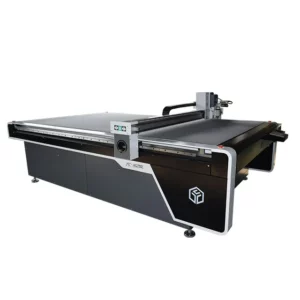Disposal of waste materials in vinyl cutting machine processes involves responsible and environmentally friendly practices. Vinyl waste can be generated during the cutting process, and proper disposal is essential to minimize environmental impact.
Here are common methods and considerations for handling waste materials in vinyl cutting machine processes:
- Material Recycling:
- Whenever possible, vinyl waste should be collected and sent for recycling. Some vinyl materials are recyclable, and recycling helps reduce the environmental impact by diverting waste from landfills. Check with local recycling facilities to determine the specific recycling options available for the type of vinyl being used.
- Separation of Waste Streams:
- Different types of waste may be generated in the vinyl cutting process, including scraps, trimmings, and unused material. Implementing a system to separate these waste streams facilitates proper disposal and recycling. For example, separate bins or containers can be designated for scrap vinyl, paper backing, and other waste materials.
- Local Waste Regulations Compliance:
- Adhere to local waste disposal regulations and guidelines. Different regions may have specific rules and regulations regarding the disposal of vinyl and other industrial waste. Familiarize yourself with local requirements to ensure compliance.
- Waste Collection and Storage:
- Implement a systematic waste collection and storage process. Use designated containers or bins to collect vinyl waste during the cutting process. Ensure that these containers are properly labeled to indicate the type of waste they contain.
- Material Reuse:
- Explore opportunities for reusing vinyl scraps or waste. Depending on the size and condition of the scraps, they may be repurposed for smaller projects, prototypes, or other applications. This reduces the overall waste generated in the cutting process.
- Shredding or Granulating:
- In some cases, vinyl waste can be shredded or granulated to create smaller particles. This processed material may be used for certain recycling applications or as a raw material for other products.
- Energy Recovery:
- Some waste-to-energy technologies can convert certain types of waste, including vinyl, into energy. While this option may not be as common for vinyl, it’s worth exploring technologies that promote energy recovery from waste materials.
- Waste Disposal Services:
- Partner with waste disposal services that specialize in handling industrial waste. These services can provide guidance on proper disposal methods and may have facilities for recycling or treating vinyl waste.
- Landfill Disposal (as a last resort):
- If recycling or other sustainable options are not available, and landfill disposal is the only option, ensure that the waste is disposed of in compliance with local regulations. vinyl cutting machine Minimize the amount of vinyl waste sent to landfills whenever possible.
- Community Recycling Programs:
- Participate in or support community recycling programs. Some areas have initiatives that facilitate the collection and recycling of specific types of industrial waste. Explore partnerships with such programs to contribute to sustainable waste management.
- Vendor Take-Back Programs:
- Check with vinyl suppliers or manufacturers for take-back programs. Some vendors offer programs to take back unused or waste materials for proper disposal or recycling.
It’s essential to prioritize environmentally friendly practices and explore options that align with sustainability goals. By implementing responsible waste disposal practices in vinyl cutting machine processes, businesses can contribute to reducing
